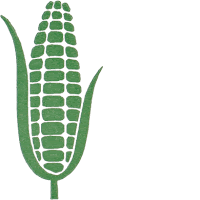Gerd Arntz
۱۳۹۰ شهریور ۱۵, سهشنبه
۱۳۹۰ شهریور ۱۲, شنبه
مجموعه ای از آثار گرد آرتز هنرمند مدرنیست آلمانی و بیو گرافی
Born into a family of
merchants, Arntz was educated at a private academy in Düsseldorf and later attended the school of applied arts in Barmen
(1921). He acquired the Düsseldorf studio of Otto Dix in 1925, when Dix moved to Berlin.
Arntz travelled widely through Europe, and lived in Vienna,
Cologne, and Moscow among other cities. Arntz was a
core member of the Cologne Progressive Artists Group[5]. From 1926 Otto Neurath sought his collaboration in designing pictograms
for the Vienna Method of Pictorial Statistics (Wiener Methode der
Bildstatistik; later renamed Isotype). From the
beginning of 1929 Arntz worked at the Gesellschafts- und Wirtschaftsmuseum
(Social and economic museum) directed by Neurath in Vienna. Eventually, Arntz
designed around 4000 pictograms. Between 1931 and 1934 he
travelled periodically to the Soviet Union (along with Neurath and Marie Reidemeister) in order to help set up the 'All-union
institute of pictorial statistics of Soviet construction and economy' (Всесоюзный институт изобразительной статистики советского строительства и хозяйства),
commonly abbreviated to IZOSTAT (ИЗОСТАТ). After the brief civil war in Austria in 1934 he emigrated to the Netherlands, joining Neurath and Reidemeister in The Hague,
where they continued their collaboration at the International Foundation for
Visual Education. Arntz cultivated a wide acquaintance among the artists and
political activists of his generation. In 1943, while living in The Hague, he
was conscripted into German military service and later was a prisoner of war.[6]
Gerd Arntz (11 December
1900, Remscheid – 4 December 1988, The Hague) was a German Modernist artist - famous for his black and white woodcuts. A
core member of the Cologne
Progressives he was also a council communist.[1] The Cologne
Progressives participated in the revolutionary unions AAUD (KAPD)
and its offshoot the AAUE in the 1920s[2], and in 1928 Arntz was contributing anti-parliamentary
prints to it's paper Die Proletarische Revolution which called for workers to form
and participate in worker's councils.[3] These political prints depicted the life of worker's
and the class struggle in abstracted figures in woodcuts.[4]
اشتراک در:
پستها (Atom)





















































